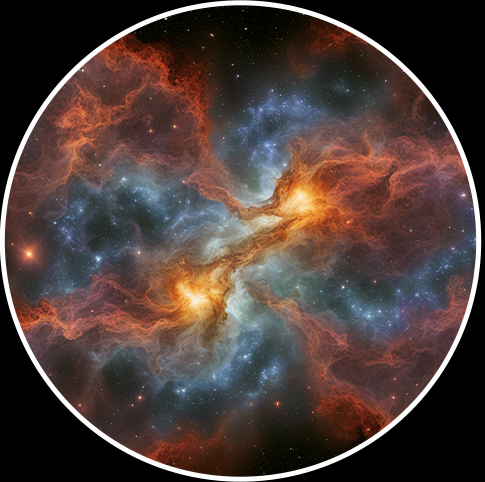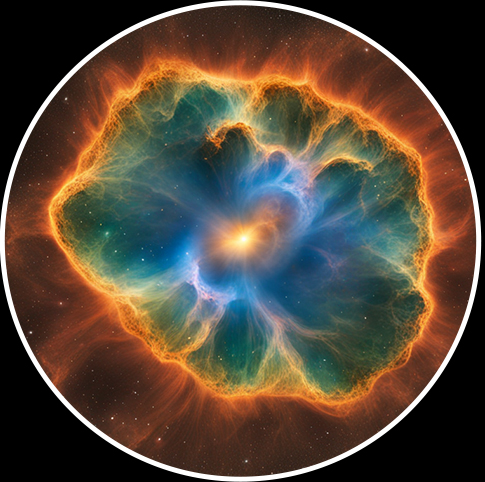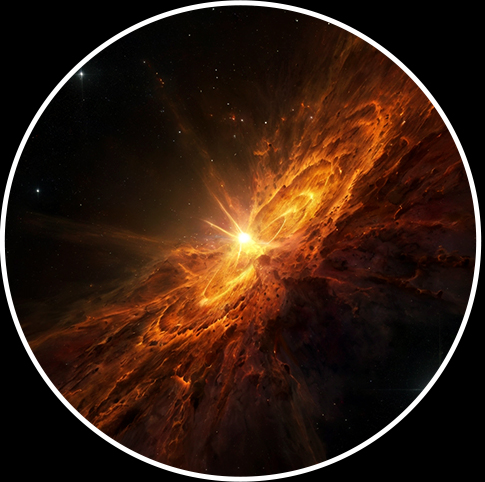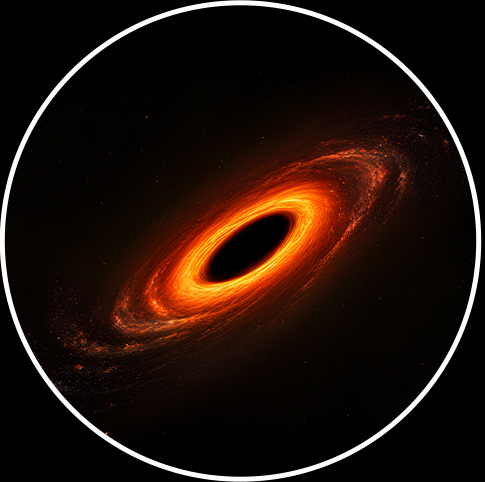
SGR A
MASS
8.149×1036 kg
EVENT HORIZON
24mln km
TEMPERATURE
1×10-9 ≈-273°C
DENSITY
Unknown (huge)
01
OBSERVATION
Sagittarius A* (Sgr A*) is a supermassive black hole located at the center of the Milky Way galaxy, approximately 26,000 light-years away from Earth. It boasts a mass of about 4.1 million times that of the Sun, confined within a region smaller than our solar system. Despite its immense gravitational pull, Sgr A* is famously challenging to observe directly due to the surrounding dust and gas obscuring visible light. However, astronomers have been able to study its effects on nearby stars and gas clouds, revealing its presence through the motions of these celestial bodies. Sgr A* plays a fundamental role in galactic dynamics, influencing the orbits of stars and regulating the flow of matter within the galactic nucleus. Intensive research efforts continue to unveil the mysteries surrounding Sagittarius A*, probing its formation, accretion processes, and emission properties to deepen our understanding of black hole physics and the evolution of galaxies.
02
FORMATION
OF BLACK HOLES
Black holes are formed through the gravitational collapse of massive stars. When a massive star exhausts its nuclear fuel, it can no longer support itself against its own gravity, causing it to collapse inward. During this collapse, the star's outer layers are ejected into space in a violent explosion known as a supernova, while the core of the star implodes. If the core's mass is above a certain threshold (about three times the mass of the Sun), the collapse continues until it forms a singularity – a point of infinite density at the center of a black hole.
PROTOSTAR FORMATION
MASSIVE STAR EVOLUTION
SUPERNOVA EXPLOSION
BLACK HOLE FORMATION
CLOUD FORMATION

PROTOSTAR FORMATION

MASSIVE STAR EVOLUTION

SUPERNOVA EXPLOSION

BLACK HOLE FORMATION

03
LOCATION
Sagittarius A* (Sgr A*) holds a unique position in the cosmos, nestled at the very heart of our Milky Way galaxy. Located approximately 26,000 light-years away from Earth, Sgr A* occupies the center of the Milky Way's spiral structure, enveloped by a dense cluster of stars and interstellar matter known as the galactic bulge. This celestial heavyweight resides within the constellation Sagittarius, hence its name, and is situated in a region of the sky known as the Sagittarius constellation, which lies in the direction of the galactic center. Despite its central location within the Milky Way, Sgr A* is notoriously challenging to observe directly due to extensive obscuration by intervening dust and gas clouds.


04
ACCRETION
Accretion processes around Sagittarius A* are complex, driven by the immense gravitational pull of the supermassive black hole. As surrounding material, including gas, dust, and stars, spirals inward, it forms a swirling accretion disk—a cosmic whirlpool where gravitational forces, friction, and compression intertwine. This disk emits radiation across various wavelengths, illuminating the space around the black hole. Some material is ejected as powerful jets, reshaping the galactic landscape. The event horizon of Sagittarius A* represents a boundary of no return, where gravity becomes so overwhelming that not even light can escape. Understanding these processes is crucial for unraveling black hole activity and advancing our comprehension of the cosmos.

Sagittarius A*
Copyright ©2024 Łukasz Szymański,
All rights reserved